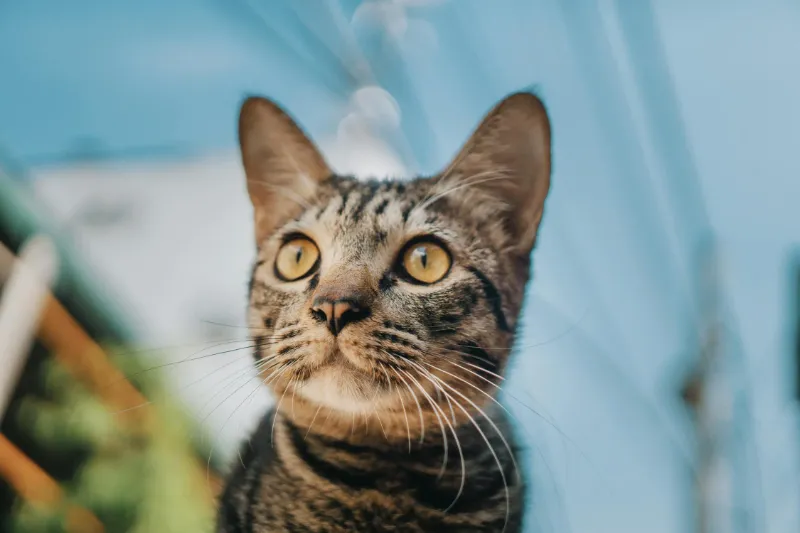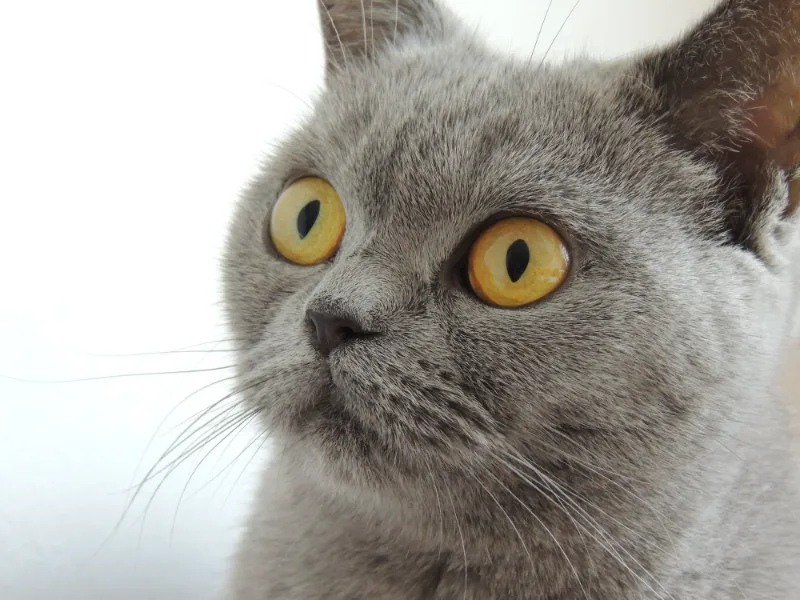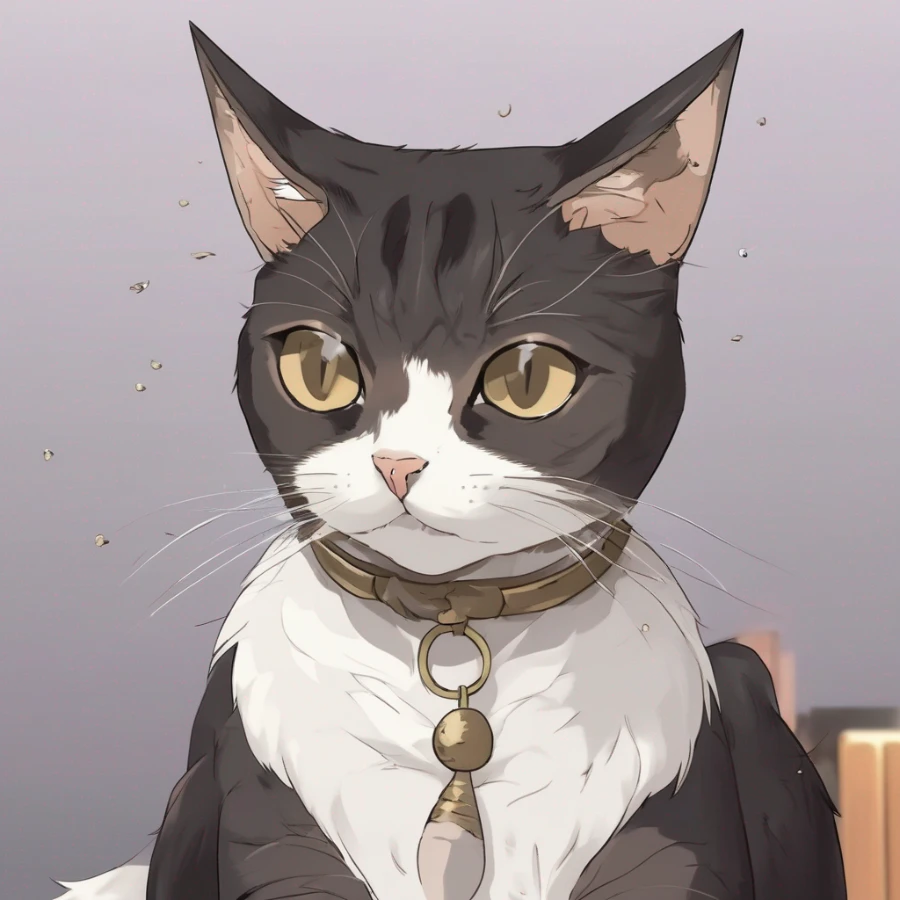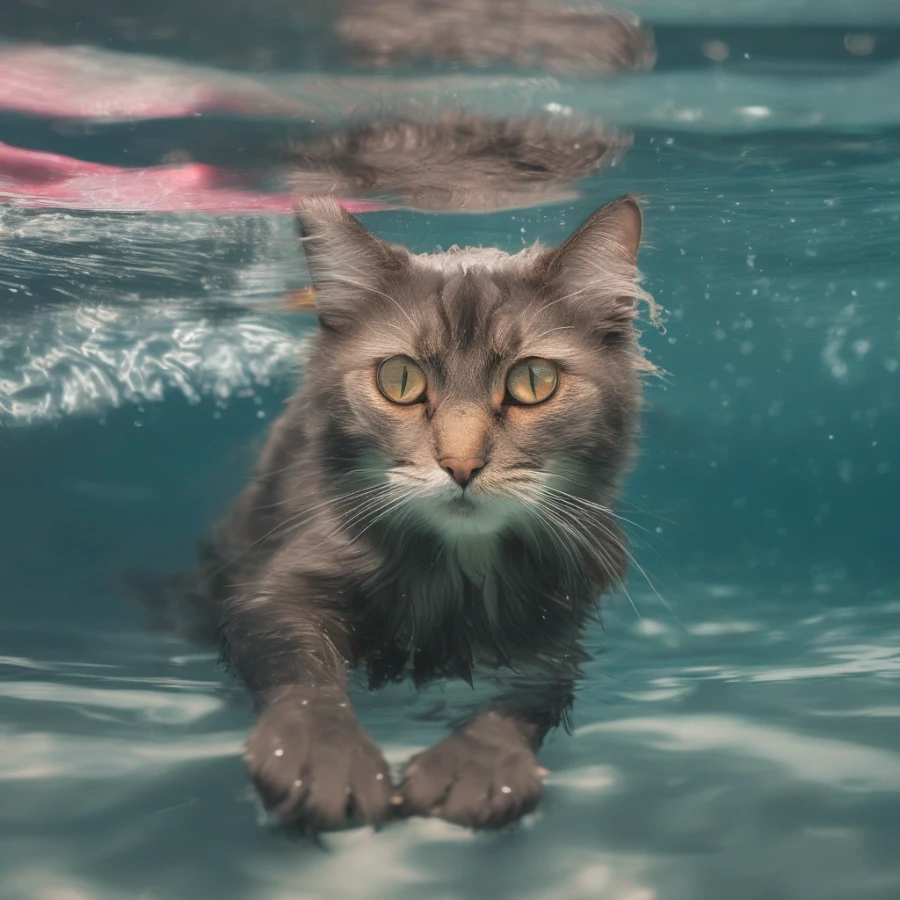Can Cats See Colors Or Are They Colour Blind

Published by: Tatsiana Korshik
Time to Read: 4 Min

What Colors Can Cats See?
Cats can indeed perceive colors, though not as vibrantly or as varied as humans. Their vision is adapted for hunting, with specific sensitivities that help them see in lower light conditions.For example, when my own cat pounces on toys at dusk, it becomes clear that their ability to discern certain colors even in dim light is quite refined. They often chase after blue or yellow hues with more enthusiasm, which aligns with scientific observations about feline color perception.
Your feline friend’s world is not solely composed of shades of gray; rather, it is painted with more muted blues and yellows. This is because cats have a lower number of cones, the photoreceptor cells in the retina that distinguish color, compared to humans.
When your cat seems intrigued by your yellow or blue clothes, it’s because those are among the colors they can see most distinctly. However, they may not be as interested in red or pink items, as these colors are less vivid and harder for cats to differentiate.
Knowing the nuances of your cat’s color vision can enhance your interactions and toy selections, making playtime more stimulating for your pet. Recognizing that their view of the world is a bit different from ours means you can tailor their environment to suit their visual strengths, something any cat owner eager to optimize their kitty’s wellbeing and happiness should consider.
Understanding Cat Vision
Your cat’s vision is a fascinating aspect of their sensory capabilities. Unlike humans, cats are tuned to see the world with adaptations that make them excellent nocturnal hunters.Anatomy of the Feline Eye
The feline eye is a marvel of evolution, designed for acute nighttime hunting. The retina of your cat’s eye boasts a high number of rods, photoreceptors that are sensitive to low light, enhancing their night vision significantly. These rods are responsible for detecting motion and providing vision in dim lighting.Cats also have cones, which are photoreceptors that perceive color, though not as many as humans do. The cones provide the ability to see some colors, primarily in the blue-violet and yellow-green range.
A key feature in the feline eye is the tapetum lucidum, a reflective layer behind the retina that acts almost like a mirror, reflecting light that passes through the retina back into their eyes. This feature gives cat eyes their distinctive glow at night and further improves their ability to see in the dark.
The anatomy is rounded off with a large pupil that can open widely in low light conditions to allow more light into the eye.
Comparison with Human Vision

When you compare your cat’s vision to your own, you’ll notice notable differences. Cats have a wider field of vision—about 200 degrees compared to the human field of vision of 180 degrees. However, their peripheral vision is limited due to the placement of their eyes, which is a trade-off for better depth perception and visual acuity in the central vision, crucial for gauging distances during a pounce.
Cats can’t see the broad spectrum of colors that humans can. Their world is not as vibrant in hues but is well-suited to detecting the slightest movements, an ability essential for a predator. Additionally, cats are nearsighted, which means they can’t see faraway objects as clearly as humans.
Color Perception in Cats
As a cat owner, you’re likely curious about how your feline friend views the world. This section unveils the mysteries of your cat’s color perception and explores which shades stand out in their sight.Understanding Cones and Color
Your cat’s eyes have cone cells, which are color receptors critical for distinguishing different hues. Unlike humans who typically have three types of cones to see a wide color spectrum, including red, green, and blue, cats are mostly equipped with two types. This makes them dichromatic, and their color perception is similar to humans who experience color-blindness to reds and greens.The cones in your cat’s eyes are tuned mainly to blue and green hues. They possess fewer cones and rely more on rod cells, which are better for detecting motion and low-light scenes but not as good for color variations. Their world is not black and white, but it’s certainly not as colorful as what you see.
Shades Cats Can and Can’t See
In your home, you might notice your cat is more attracted to toys or objects that are of certain colors. That’s because cats can typically perceive:Blues: Various shades of blue appear clear to them.
Yellows and Greens: These colors also stand out in their vision, although they might look muted.
However, certain hues are off the palette for your pet:
Reds: Your cat might see this color as a dull gray.
Oranges and Browns: Similarly, these don’t pop for cats like they do for us.
It’s intriguing to think that while a red laser pointer seems vivid to us, your cat is probably just chasing the movement rather than being attracted to the color.



